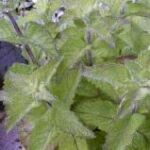
|
| Bergamot Orangess |
Some 16 species of small, evergreen trees and shrubs comprise this genus, native to SE Asia and E Pacific islands. Most citruses have been cultivated for so long that their origins are obscure. The species are very closely related, with numerous hybrids and cultivars. Citruses were unknown in Europe in Classical times, through C. aurantium and C. bergamia were first mentioned in Chinese medicine in the first century CE. The first citrus to arrive in Europe was the bitter orange, C. aurantium, probably brought by the Portuguese from the East Indies. It was followed by C. limon, probably from China, somewhere between tthe 11th and 13th centuries. Medicinal uses of citruses are complex. Various parts of the tree are used, and also various parts of the fruit at different stages of ripeness. Commonly, the leaves, fruits, juice and bark are used, while in China several quite different drugs are prepared from the fruits alone - one of the most valuable being the peel of C. reticulata, which becomes more potent with age. The related Poncirus trifoliata (hardy orange, Japanese bitter orange) is used in identical ways to C. aurantium. Citruses are high in vitamin C, flavonoids, acids, and volatile oils. They also contain coumarins, such as bergapten, which sensitize the skin to sunlight. Bergapten is sometimes added to tanning preparations and may cause dermatitis or allergic responses. The most recent uses of citruses are anti-oxidants and chemical exfoliants in cosmetics.
Similar in appearance to C. aurantium, but with broader leaves and more aromatic, yellow rind.
Has highly aromatic, spherical, smooth fruits. |
||
A bitter, aromatic herb that relieves tension, relaxes spasms, and improved digestion. Neroli oil (from flowers) is stimulant, and reputedly aphrodisiac; bergamot oil (from peel) is more sedative and healing. |
||
|
||
The Encyclopedia of Herbs by Deni Brown Copyright & copy; 1995, 2001 Dorling Kindersley Limited. pp.171-172 Magickal Aromatherapy by Scott Cunningham Copyright ©1989 Llewellyn Publications, Inc. pg. 59 | ||